Sh4dow’s MySQL-Workbench Installer (SWI) 1.0
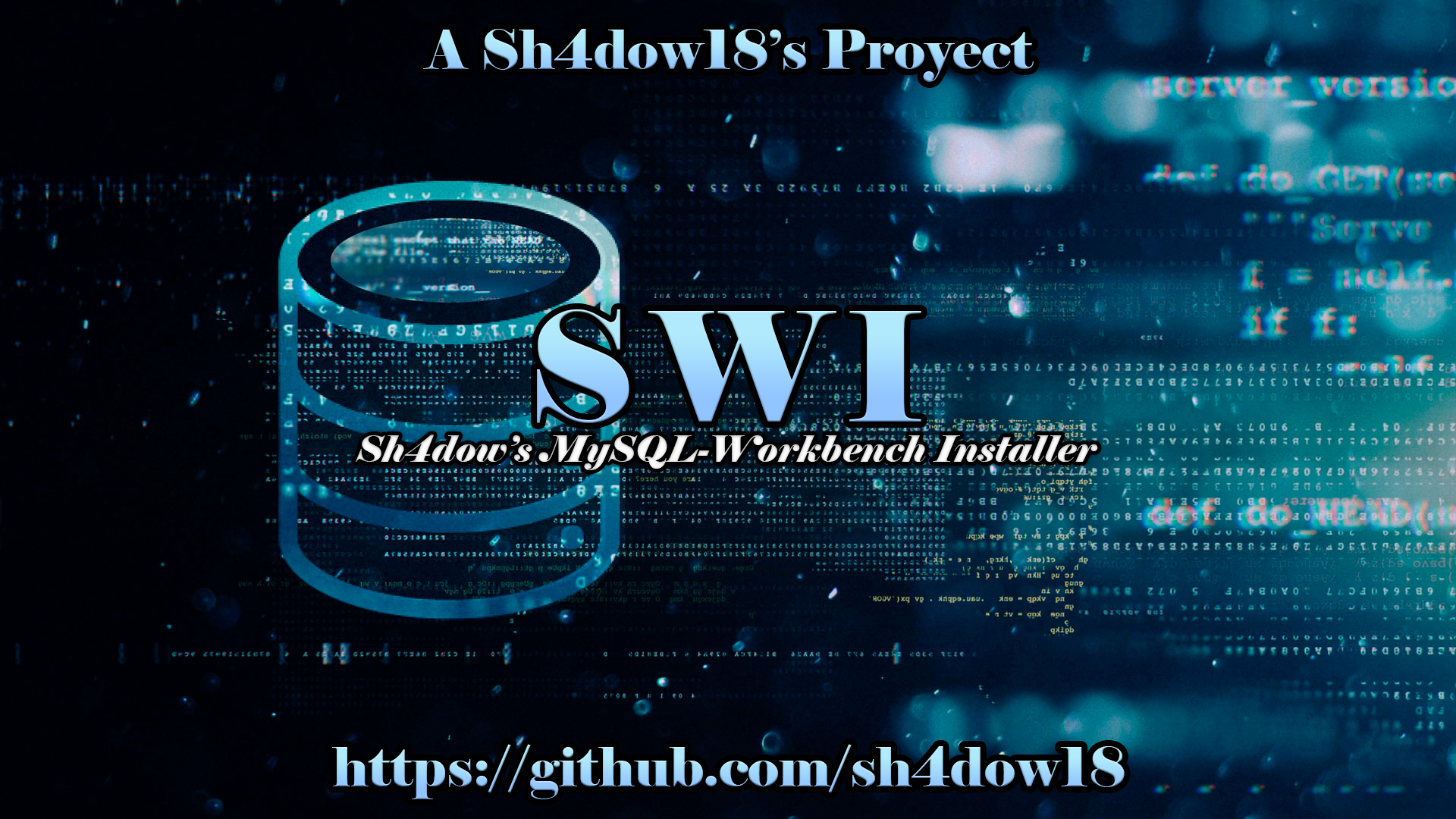
Full Official Stable Code
There may be several versions of the program, however, I recommend that you use the most updated stable version, which you will find by clicking here . This link will redirect you to my github.
Overview
This project is an installer that helps you to have MySql-Workbench in Debian 11 to be able to manipulate SQL databases.
This program saves time in terms of downloading packages, necessary libraries and it does everything automatically to have the database system fully installed and without bugs in less than 5 minutes.
Version
Version: 1.0
License
This project is licensed under a GNU General Public License v3.0.
If you want to know about this license, click here
What is MySQL?
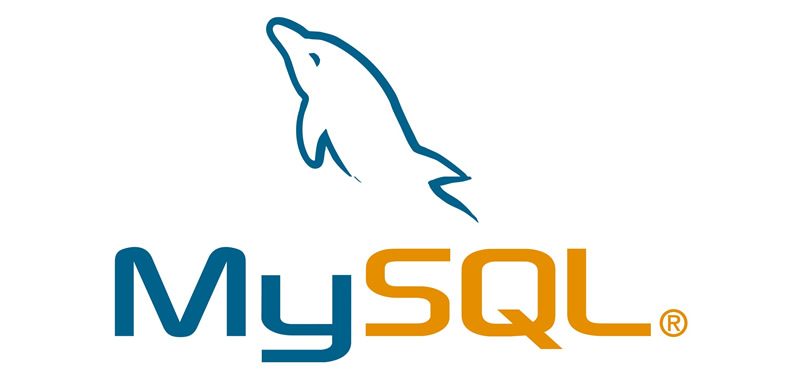
MySQL is a relational database management system developed by Oracle Corporation and is considered the most popular open source database in the world and one of the most popular alongside Microsoft SQL Server.
Unlike projects like Apache, MySQL is sponsored by a private company, which owns the copyright of most of the code, therefore, this system has 2 licenses: General Public License and Commercial License by Oracle Corporation.
The database is distributed in several versions, a Community, distributed under the GNU General Public License, and several Enterprise versions for those companies that want to incorporate it into proprietary products. The Enterprise versions include additional products or services such as monitoring tools and official technical assistance. In 2009, a fork called MariaDB was created by some developers (including some original MySQL developers) unhappy with the development model and the fact that the same company controls MySQL products at the same time.
What is MySQL Workbench?
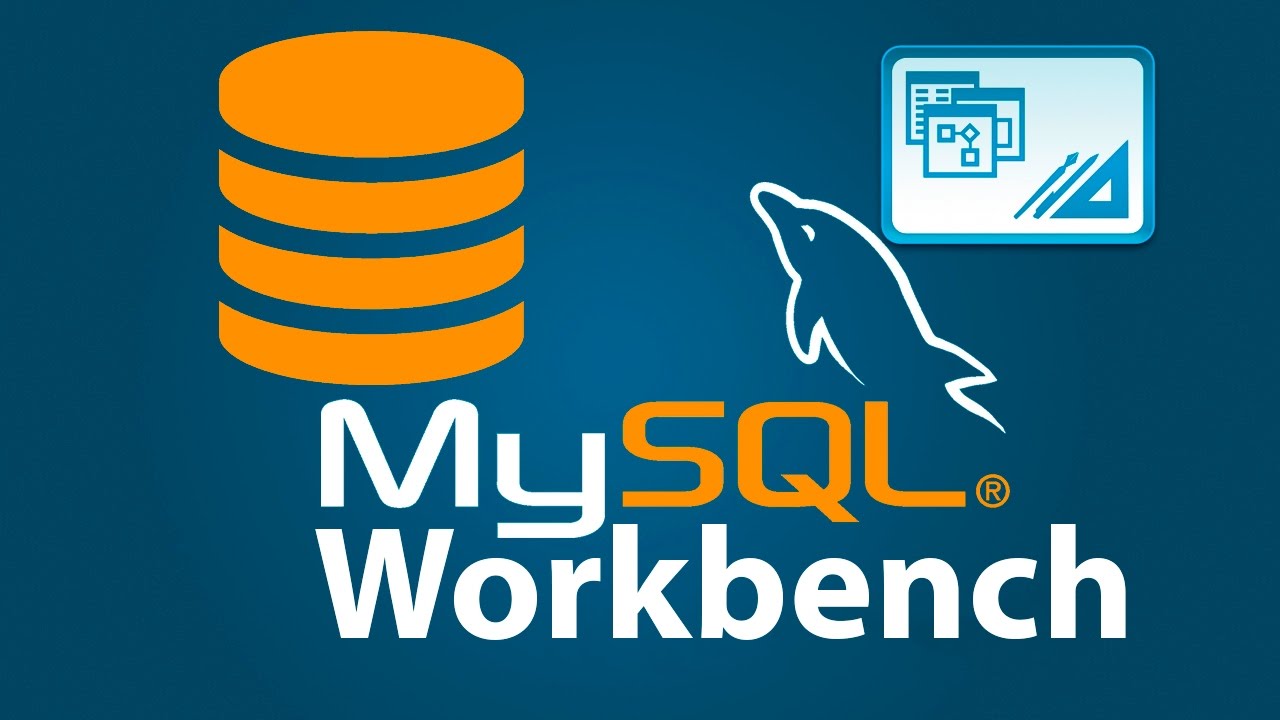
MySQL Workbench is a visual database design tool that integrates software development, database administration, database design, management, and maintenance for the MySQL database system. It replaces the previous set of software, MySQL GUI Tools Bundle. If you want to know more about the program, click here .
Versions of
- MySQL: 8.0.27
- MySQL Workbench: 8.0.27
MySQL Workbench Requirements
MySQL Workbench requires a current system to run smoothly. The minimum hardware requirements are:
- CPU: Intel Core or Xeon 3GHz (or Dual Core 2GHz) or equal AMD CPU
- Cores: Single (Dual/Quad Core is recommended)
- RAM: 4 GB (6 GB recommended)
- Graphic Accelerators: nVidia or ATI with support of OpenGL 1.5 or higher
- Display Resolution: 1280×1024 is recommended, 1024×768 is minimum.
Using SWI

First, you have to download the repository. To download it, you can download the compressed file (.zip) or clone the repository, with the git program installed, through the CMD in Windows or with a terminal in Linux. This is done in the form (In both cases):
git clone https://github.com/sh4dow18/swi.git
Then, the folder is accessed and the installer is run with sudo privileges:
cd swi/
sudo bash installer.sh
If you want to uninstall MySQL Workbench use:
sudo bash uninstaller.sh
SWI Information (Installer)
Then, the installer introduces itself:
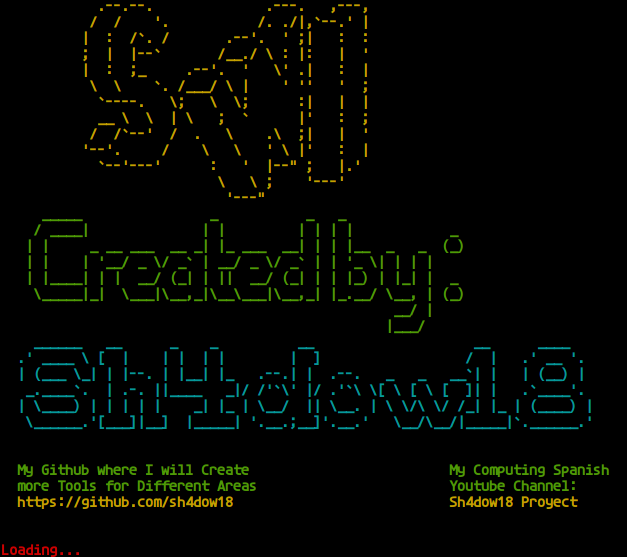
Now, the necessary programs and libraries begin to download to be able to install MySQL Workbench:
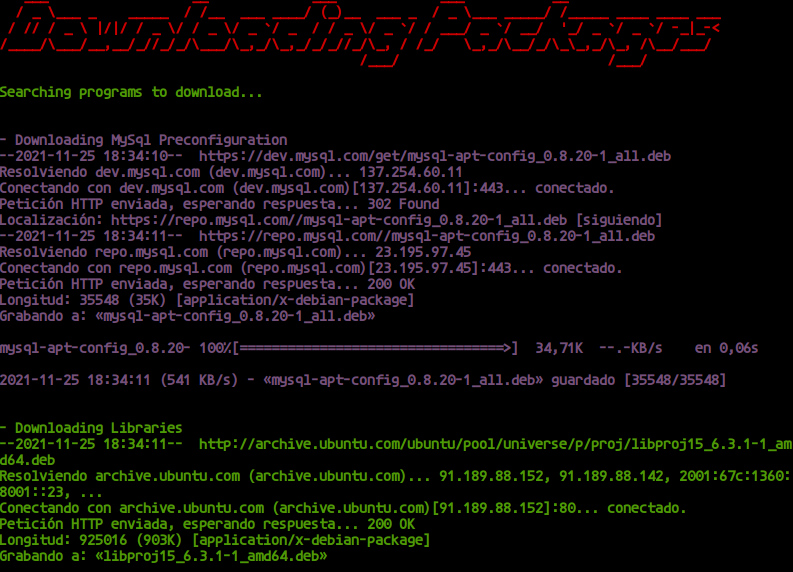
Finally, all the downloaded packages that allow you to have the MySQL Workbench are installed:
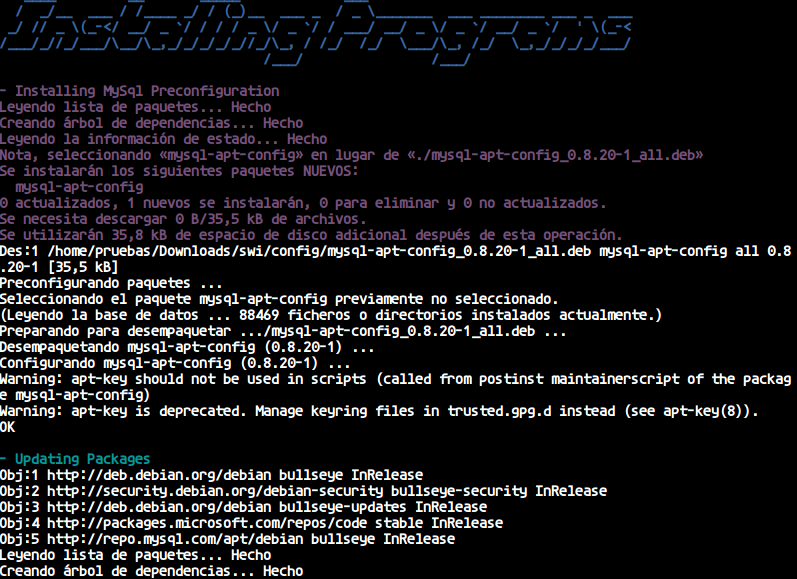
And at the end, a message will be displayed saying that the installation has finished. Now you can open MySQL Workbench:
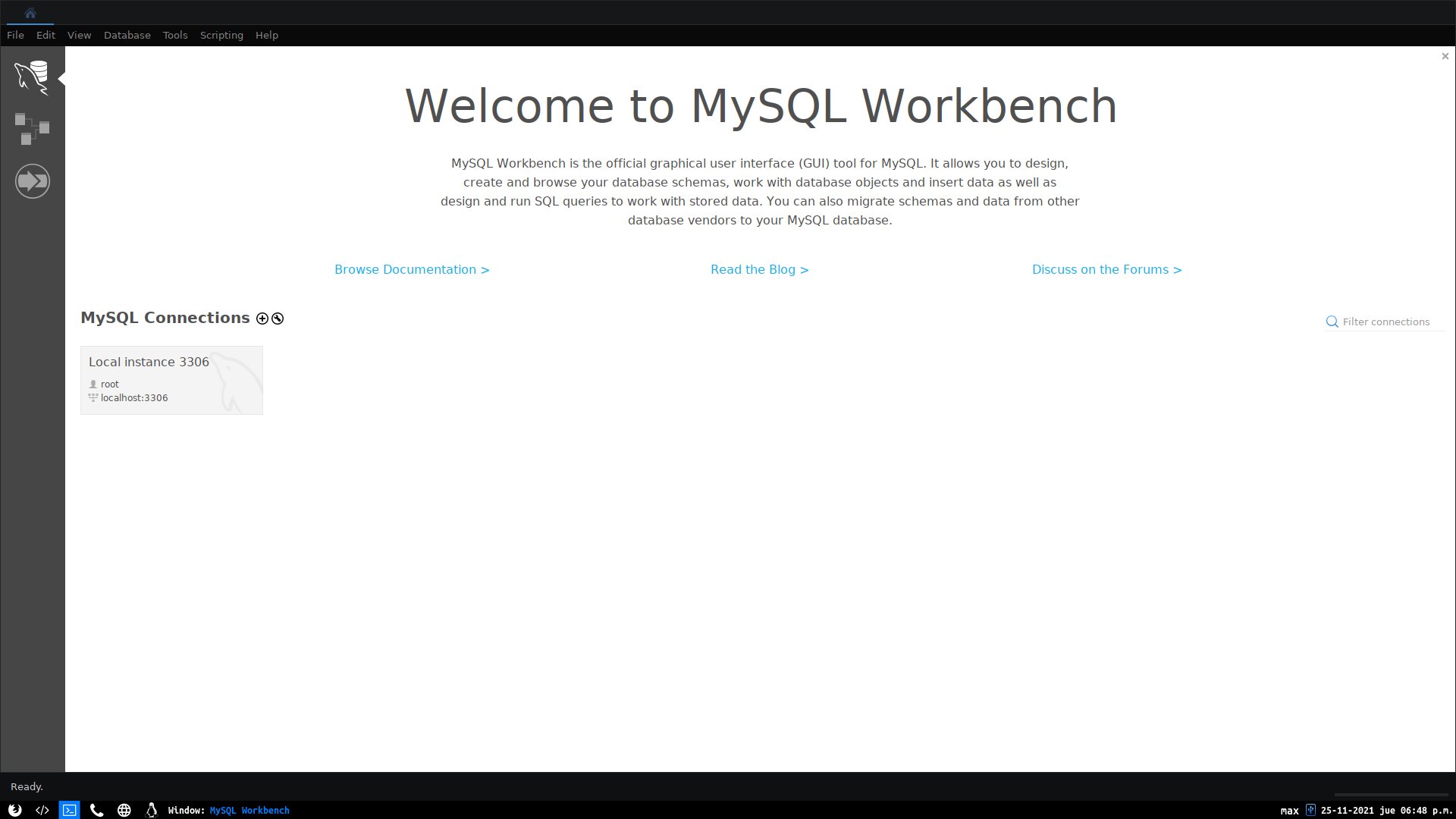
SWI Information (Uninstaller)
Then the uninstaller introduces itself:

Immediately, MySQL, Libraries and MySQL Workbench will be uninstalled:
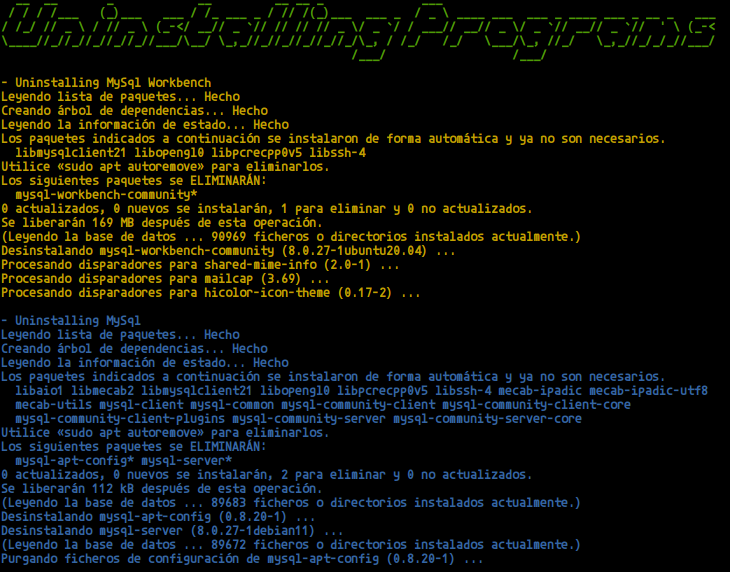
Finally, a message will be displayed saying that the uninstallation has finished.
Do yout want to Know More? READ THIS!

To achieve this, the compatibility between Debian 11 and Ubuntu had to be seen, because the MySQL Workbench program has an installable version by a .deb package, and this works, because Ubuntu is based on Debian and they use the same Package manager, however, as was done for Ubuntu, there are repositories that Debian 11 cannot access, so you have to download everything manually from the repositories. What the program does is download the repositories that are needed to install it, which are MySQL and Libraries. The version that can be installed is Ubuntu Focal (20.04).
Also, since this installer and uninstaller were made for Debian 11, check if the program is actually running on Debian 11.
Finally, the Gnome Keyrings are installed so that the program knows that it is safe to access MySQL through MySQL Workbench in the window manager that is being used.
Here ends the documentation for now. Eat vegetables and have a Nice Day :D